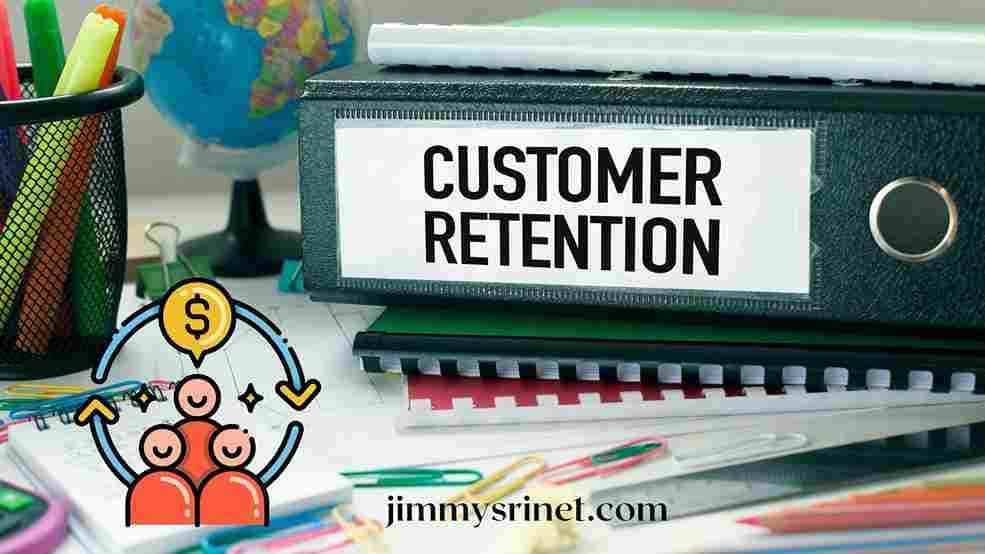Why Selling Products Online is a Lucrative Business Opportunity
The world of online shopping has experienced unprecedented growth in recent years, with more and more consumers turning to the internet to purchase products and services. This shift in consumer behavior has created a lucrative business opportunity for entrepreneurs and small business owners who are looking to sell products online. By leveraging the power of the internet, businesses can reach a global audience, increase their sales, and build a successful online brand.
One of the key benefits of selling products online is the potential for passive income. With an online store, businesses can sell products 24/7, without the need for a physical storefront or a large team of employees. This means that businesses can generate revenue while they sleep, and can scale their operations quickly and easily.
In addition to the potential for passive income, selling products online also provides businesses with a range of other benefits. For example, online stores can be easily updated and modified, allowing businesses to quickly respond to changes in the market and to customer demand. Online stores also provide businesses with access to a wealth of data and analytics, which can be used to inform marketing and sales strategies.
So, how can businesses get started with selling products online? The first step is to identify a profitable niche or market. This involves researching popular trends and products, and identifying areas where there is a high demand for goods. Businesses can use online tools such as Google Trends and Amazon Best Sellers to research popular products and trends.
Once a profitable niche or market has been identified, businesses can start to build their online store. This involves choosing an ecommerce platform, selecting a domain name, and designing a visually appealing website. Businesses should also ensure that their website is optimized for mobile devices, as more and more consumers are using their smartphones to shop online.
By following these steps, businesses can build a successful online store and start selling products online. With the potential for passive income, low startup costs, and access to a global audience, selling products online is a lucrative business opportunity that businesses should not ignore.
How to Identify Profitable Products to Sell Online
Identifying profitable products to sell online is a crucial step in building a successful online business. With so many products to choose from, it can be overwhelming to determine which ones will resonate with customers and generate significant revenue. However, by using the right tools and strategies, online sellers can increase their chances of success and make informed decisions about which products to sell.
One of the most effective ways to identify profitable products is to research popular trends and consumer demand. Online tools such as Google Trends and Amazon Best Sellers provide valuable insights into what products are currently in demand and which ones are trending upwards. By analyzing this data, online sellers can identify gaps in the market and opportunities to capitalize on emerging trends.
Another important factor to consider when identifying profitable products is competition. Online sellers should research their competitors and analyze their product offerings, pricing strategies, and marketing tactics. By understanding the competitive landscape, online sellers can differentiate their products and develop effective marketing strategies to attract customers.
In addition to researching trends and competition, online sellers should also evaluate the profitability of potential products. This involves calculating the cost of goods, shipping, and marketing, as well as estimating the potential revenue and profit margins. By using tools such as eBay and Amazon, online sellers can research the prices of similar products and estimate the potential demand and revenue.
Some popular product research tools that online sellers can use to identify profitable products include:
- Google Trends: A tool that analyzes search data to identify popular trends and topics.
- Amazon Best Sellers: A list of the top-selling products on Amazon, which provides insights into consumer demand and trends.
- eBay: A platform that allows online sellers to research prices and demand for specific products.
- Keyword research tools: Tools such as Ahrefs and SEMrush that provide insights into keyword search volume and competition.
By using these tools and strategies, online sellers can increase their chances of success and identify profitable products to sell online. Remember, the key to success in online sales is to stay up-to-date with industry trends and consumer demand, and to continually adapt and evolve your product offerings and marketing strategies.
Setting Up an Online Store: A Step-by-Step Guide
Setting up an online store is an exciting step in building a successful online business. With the right tools and strategies, entrepreneurs and small business owners can create a professional and user-friendly online store that attracts and retains customers. In this section, we will provide a step-by-step guide on how to set up an online store, including choosing an ecommerce platform, selecting a domain name, and designing a visually appealing website.
Step 1: Choose an Ecommerce Platform
There are many ecommerce platforms to choose from, each with its own unique features and benefits. Some popular options include Shopify, WooCommerce, and BigCommerce. When selecting an ecommerce platform, consider factors such as ease of use, customization options, and integrations with payment gateways and shipping providers.
Step 2: Select a Domain Name
A domain name is the web address that customers will use to access your online store. Choose a domain name that is easy to remember, relevant to your business, and available. You can register your domain name through a registrar such as GoDaddy or Namecheap.
Step 3: Design a Visually Appealing Website
A well-designed website is essential for creating a positive user experience and building trust with customers. Consider hiring a professional web designer or using a website builder such as Wix or Squarespace. Ensure that your website is mobile-friendly, as more and more customers are shopping on their smartphones.
Step 4: Set Up Payment and Shipping Options
To process payments and ship products, you will need to set up payment gateways and shipping integrations. Popular payment gateways include PayPal, Stripe, and Square. Consider offering free shipping or discounted rates to incentivize customers to make a purchase.
Step 5: Add Products and Content
Once your online store is set up, you can start adding products and content. Ensure that your product descriptions are detailed and accurate, and that your product images are high-quality and visually appealing. Consider adding a blog or FAQ section to provide additional information and support to customers.
By following these steps, entrepreneurs and small business owners can set up a professional and user-friendly online store that attracts and retains customers. Remember to stay up-to-date with industry trends and best practices, and continually adapt and evolve your online store to meet the changing needs of your customers.
Effective Marketing Strategies for Online Sales
Once you have set up your online store and added products, it’s time to start promoting your business and driving sales. In this section, we will discuss various marketing strategies for promoting online products, including social media marketing, email marketing, and paid advertising.
Social Media Marketing
Social media platforms such as Facebook, Instagram, and Twitter are great channels for promoting your online products. Create a business page on each platform and post high-quality product images, videos, and descriptions. Engage with your followers by responding to comments and messages, and use paid social media ads to reach a wider audience.
Email Marketing
Email marketing is a powerful tool for driving sales and building customer loyalty. Build an email list by offering incentives such as discounts or free shipping, and send regular newsletters to your subscribers showcasing new products, promotions, and company news.
Paid Advertising
Paid advertising is a great way to drive traffic to your online store and increase sales. Google Ads and Facebook Ads are two popular platforms for paid advertising, and offer a range of targeting options to help you reach your desired audience.
Content Marketing
Content marketing is a strategic approach to marketing that involves creating and distributing valuable, relevant, and consistent content to attract and retain a clearly defined audience. Create a blog on your website and post regular articles about your products, industry trends, and company news.
Influencer Marketing
Influencer marketing is a form of marketing that involves partnering with influencers in your industry to promote your products to their followers. Choose influencers who have a large following and are relevant to your niche, and offer them free products or a commission on sales in exchange for promoting your business.
By incorporating these marketing strategies into your online sales strategy, you can increase your visibility, drive traffic to your website, and ultimately, boost your sales and revenue. Remember to track your results and adjust your strategy accordingly to ensure maximum ROI.
How to Create Engaging Content that Drives Sales
Creating high-quality, engaging content is crucial for driving sales and building a successful online business. In this section, we will discuss the importance of creating engaging content and provide tips on writing compelling product descriptions, creating product videos, and using customer testimonials.
Why Engaging Content Matters
Engaging content is essential for capturing the attention of potential customers and driving sales. When customers are engaged with your content, they are more likely to trust your brand and make a purchase. Additionally, engaging content can help to build brand awareness and establish your business as an authority in your industry.
Writing Compelling Product Descriptions
Product descriptions are a critical component of any online store. They provide customers with the information they need to make an informed purchasing decision. When writing product descriptions, focus on highlighting the key features and benefits of the product. Use clear and concise language, and include high-quality product images to help illustrate the product’s features.
Creating Product Videos
Product videos are a great way to showcase your products and provide customers with a more immersive shopping experience. When creating product videos, focus on highlighting the key features and benefits of the product. Use high-quality video production techniques, and include captions and subtitles to help make the video more accessible.
Using Customer Testimonials
Customer testimonials are a powerful way to build trust and credibility with potential customers. When using customer testimonials, focus on highlighting the key benefits and features of the product. Use real customer reviews and ratings, and include images and videos to help illustrate the customer’s experience.
Best Practices for Creating Engaging Content
When creating engaging content, there are several best practices to keep in mind. First, focus on providing value to your customers. Use clear and concise language, and include high-quality images and videos to help illustrate the product’s features. Additionally, use social proof such as customer testimonials and reviews to help build trust and credibility with potential customers.
By following these tips and best practices, you can create engaging content that drives sales and helps to build a successful online business. Remember to stay up-to-date with industry trends and best practices, and continually adapt and evolve your content strategy to meet the changing needs of your customers.
Building a Loyal Customer Base: The Key to Long-Term Success
Building a loyal customer base is crucial for long-term success in online sales. A loyal customer base can provide a steady stream of revenue, help to build brand awareness, and provide valuable feedback and insights to improve your business. In this section, we will discuss the importance of building a loyal customer base and provide strategies for providing excellent customer service, offering loyalty programs, and encouraging customer reviews.
Why a Loyal Customer Base Matters
A loyal customer base is essential for building a successful online business. Loyal customers are more likely to make repeat purchases, provide positive reviews and recommendations, and help to build brand awareness. Additionally, a loyal customer base can provide valuable feedback and insights to improve your business and stay ahead of the competition.
Providing Excellent Customer Service
Providing excellent customer service is critical for building a loyal customer base. This includes responding promptly to customer inquiries, resolving issues quickly and efficiently, and providing personalized support and recommendations. By providing excellent customer service, you can build trust and loyalty with your customers and establish your business as a leader in your industry.
Offering Loyalty Programs
Offering loyalty programs is a great way to reward your customers and encourage repeat business. This can include offering discounts, free shipping, or exclusive access to new products and services. By offering loyalty programs, you can build a loyal customer base and provide a competitive advantage over your competitors.
Encouraging Customer Reviews
Encouraging customer reviews is a great way to build trust and credibility with potential customers. This can include offering incentives for customers to leave reviews, such as discounts or free products. By encouraging customer reviews, you can build a loyal customer base and establish your business as a leader in your industry.
Best Practices for Building a Loyal Customer Base
When building a loyal customer base, there are several best practices to keep in mind. First, focus on providing excellent customer service and support. This includes responding promptly to customer inquiries, resolving issues quickly and efficiently, and providing personalized support and recommendations. Additionally, offer loyalty programs and incentives to reward your customers and encourage repeat business. Finally, encourage customer reviews and feedback to build trust and credibility with potential customers.
By following these strategies and best practices, you can build a loyal customer base and establish your business as a leader in your industry. Remember to stay up-to-date with industry trends and best practices, and continually adapt and evolve your customer service and loyalty programs to meet the changing needs of your customers.
Optimizing and Scaling Your Online Business for Maximum Profits
Once you have established a successful online business, it’s essential to optimize and scale your operations to maximize profits. In this section, we will discuss tips and strategies for analyzing sales data, identifying areas for improvement, and investing in automation tools to streamline your business.
Analyzing Sales Data
Analyzing sales data is crucial for understanding your business’s performance and identifying areas for improvement. Use tools like Google Analytics to track website traffic, conversion rates, and sales. This data will help you make informed decisions about product offerings, marketing strategies, and pricing.
Identifying Areas for Improvement
Identifying areas for improvement is essential for optimizing your online business. Use data analysis to identify bottlenecks in your sales funnel, such as high cart abandonment rates or low conversion rates. Address these issues by implementing changes to your website, marketing strategies, or product offerings.
Investing in Automation Tools
Investing in automation tools can help streamline your online business and increase efficiency. Use tools like email marketing automation software to personalize and optimize your email campaigns. Additionally, use inventory management software to track and manage your inventory levels, reducing the risk of overselling or underselling.
Scaling Your Business
Scaling your online business requires careful planning and execution. Use data analysis to identify opportunities for growth, such as expanding your product offerings or entering new markets. Invest in scalable infrastructure, such as cloud hosting and content delivery networks, to ensure your website can handle increased traffic and sales.
Staying Up-to-Date with Industry Trends and Best Practices
Staying up-to-date with industry trends and best practices is essential for maintaining a competitive edge in online sales. Attend conferences and workshops, read industry publications, and participate in online forums to stay informed about the latest developments and strategies in online sales.
By following these tips and strategies, you can optimize and scale your online business for maximum profits. Remember to stay focused on providing excellent customer service, creating engaging content, and building a loyal customer base to ensure long-term success in online sales.
Overcoming Common Challenges in Online Sales
As an online seller, you may encounter various challenges that can impact your business’s success. In this section, we will discuss common challenges faced by online sellers and provide practical advice and solutions for overcoming them.
Managing Inventory
Managing inventory is a crucial aspect of online sales. To avoid overselling or underselling, use inventory management software to track your stock levels and automate your inventory management process. Additionally, consider implementing a just-in-time inventory system to reduce storage costs and improve efficiency.
Handling Returns
Handling returns is an inevitable part of online sales. To minimize the impact of returns on your business, establish a clear return policy and provide excellent customer service to resolve any issues promptly. Consider offering free returns or exchanges to build trust with your customers and reduce the likelihood of negative reviews.
Dealing with Negative Reviews
Negative reviews can be detrimental to your online business. To address negative reviews, respond promptly and professionally to the customer’s concerns. Offer a solution or compromise to resolve the issue, and use the feedback to improve your products or services.
Other Common Challenges
In addition to managing inventory, handling returns, and dealing with negative reviews, online sellers may also face other common challenges, such as:
- Competition from other online sellers
- Changes in consumer demand and trends
- Technical issues with your website or payment processing
- Security concerns and data breaches
To overcome these challenges, stay up-to-date with industry trends and best practices, and continually adapt and evolve your business strategies to meet the changing needs of your customers.
By following these tips and strategies, you can overcome common challenges in online sales and maintain a successful online business. Remember to stay focused on providing excellent customer service, creating engaging content, and building a loyal customer base to ensure long-term success in online sales.








